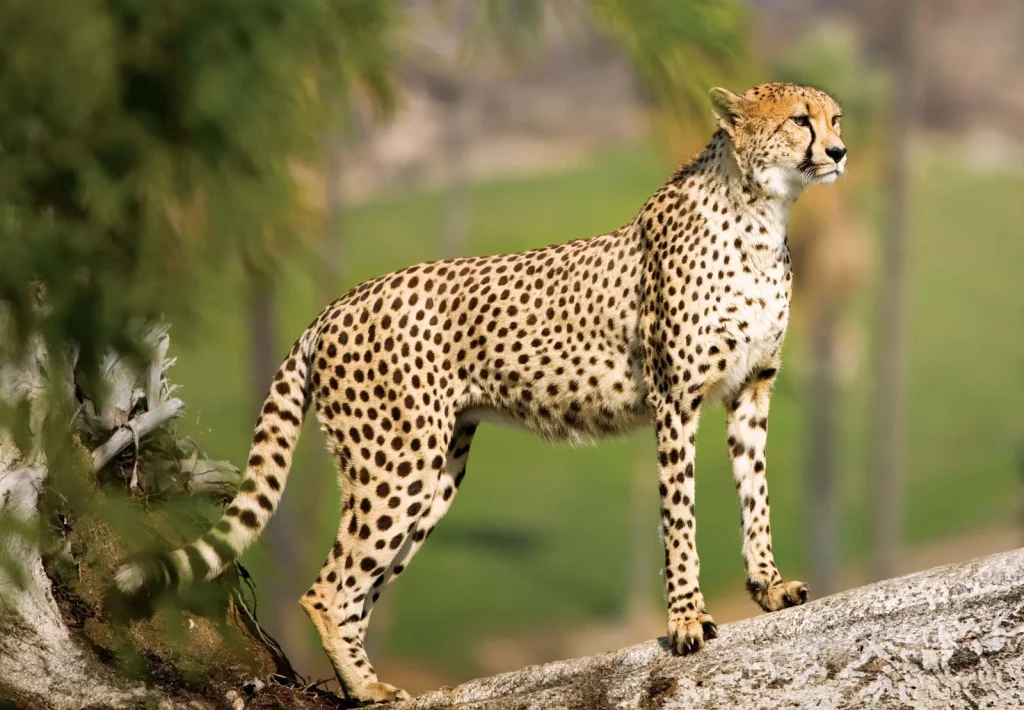Cheetah: Facts, Behaviors, Diet, Scientific Name, Habitats
Cheetah: Facts, Behaviors, Diet, and Habitats. What is a cheetah? There are five subspecies of this big cat. It is slim and has muscular, long legs — in relation to its body size when compared to other cats. — a long tail for balance, a flexible spine, a deep chest, a small, rounded head balanced on a long neck, and unique pads on its feet.
A modification to assist retain traction, similar to a soccer player’s cleats, makes it the only cat that is unable to retract its claws. Additionally, it has characteristic black “tear tracks” that extend from the inside corner of each eye to the mouth, which may act as a glare-reduction technique when hunting during the day.
Cheetah Facts
21 Facts About Cheetahs (The Fastest Land Animal Cheetahs)
SCIENTIFIC NAME: ACINONYX JUBATUS
LIFE SPAN: MAXIMUM RECORDING OF A FEMALE LIVING 14 YEARS AND 5 MONTHS IN THE WILD AND ABOUT 10 YEARS FOR A MALES.
GESTATION: ABOUT 3 MONTHS
WEIGHT: 20 TO 72 KILOGRAMS (45 TO 160 POUNDS)
HABITAT: WIDE RANGE OF HABITATS—FROM DRY FORESTS AND THICK SCRUBS THROUGH GRASSLANDS AND SAHARA DESERTS.
PREDATORS: EAGLES, HUMANS, HYENAS, LIONS
SIZE: 1 TO 1.5 METERS IN LENGTH (45 TO 60 INCHES) 76 CENTIMETERS AT THE SHOULDER (30 INCHES)
DIET: CARNIVORES
Challenges Faced with Cheetahs
- Human-wildlife conflict threatens their survival: When cheetahs attack cattle as a result of a decrease in their normal prey, farmers often slaughter the animals as a result of the attack.
- Habitat loss also presents a major threat to cheetahs: Agriculture, roads, and settlements decimate the vast grasslands that this huge cat considers home as human populations increase and spread. There are 6,674 adults and juvenile cheetahs in all, according to estimates. The cat’s low population density throughout its range means that it needs big, contiguous habitat regions in order to survive. 76% of the known cheetah range is found on territories that are not protected. Because of this, populations become incredibly fragmented, which is worrying for their future.
- Illegal trade is threatening wild populations: Cheetahs are unlawfully caught, sold as live animals to the exotic pet trade, and also poached for their skin. The area where illegal live trafficking is most likely to have a detrimental effect on wild populations is East Africa. Although the precise origin of the trafficking is unknown, information from interdictions and interviews with traders indicates that cheetahs are occasionally taken from areas outside of Somalia, such as sections of Ethiopia and Kenya.
Cheetah Behaviors
- Cheetahs tend to be introverted: This cat lives by itself. Males have been observed residing in coalitions where they exhibit a high level of tolerance for the presence of other males. The related coalition members even engage in play and physical interaction like grooming, but the unrelated males tend to keep to themselves while still participating in the coalition. Like all females, some men prefer to keep to themselves and do not participate in coalitions. They are referred to be nomads since they rarely stay in one place for very long. After mating, a male may occasionally stay with a female for a brief while, but most of the time the female is by herself with the cheetah cubs. Mothers spend a lot of time educating their offspring about hunting. Cheetah cubs are given small, alive antelopes to practice chasing and catching.
Cheetah Diet
- Cheetahs can run fast, but they are timid predators: They hunt small mammals and birds in addition to tiny antelopes like Thomson’s gazelles and impalas. It approaches the victim as closely as possible before attempting to outrun it with a burst of speed. The fastest land mammal is one of these large cats. These cats have a top speed range of 95 to 120 km/h (60-75 mph). When the cat gets close enough, it uses one of its paws to knock the prey to the ground before biting it in the neck to suffocate it. After a kill, it consumes the prey fast while keeping a watch out for scavengers, including jackals, vultures, hyenas, and lions, who will take from this timid predator. Unfortunately, the cat can only maintain its speed for a short distance before becoming too hot. The vast majority of hunts are unsuccessful.
Habitats: Where do cheetahs live?
This species has a fairly broad historical distribution. But in the 1970s, numbers were drastically reduced because European settlers viewed these enormous cats as vermin that needed to be wiped out. Only 10% of their historical range is where they are now. Although their range is extensive, the areas they still call home are incredibly few and dispersed. Cheetah populations have strongholds in Southern and Eastern Africa.



